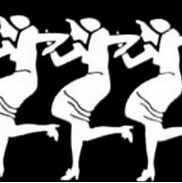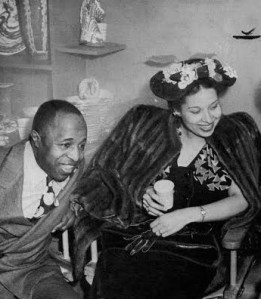 I’ve been doing what I like to do best-researching. I saw a story online about the 1918 Spanish Flu and it dawned on me that my father was alive back then. As a matter of fact, he was married to his first wife, had his first daughter, had signed up for WWI, had written a song and was on the road traveling down south with his “Deluxe Players”. The 1918 pandemic lasted from, I think, August of 1918 through December of 1920. Eddie began his first on stage vaudeville work in 1920. He was a comedian. The 1918 flu was targeting young adults. About half of the deaths were in the 20-40 range. Eddie was about 29. He had already experienced diseases and poverty being born in 1891 in Baltimore during a time of no indoor plumbing and rampant Leukemia in the East Baltimore slums. It’s one of the reasons he left home at nine years old and worked as a boy magician until someone suggested that he was so funny he really didn’t need a lot of props to entertain people. It seems that Eddie never got sick. Vaudeville and Burlesque were pulling people in. Eddie was performing in Tampa, Fla., in 1919 with his Deluxe Players when he applied for and got a job as a comedian in New York in 1920. The flu had hit Haskell County, Kansas In January 1918.
I’ve been doing what I like to do best-researching. I saw a story online about the 1918 Spanish Flu and it dawned on me that my father was alive back then. As a matter of fact, he was married to his first wife, had his first daughter, had signed up for WWI, had written a song and was on the road traveling down south with his “Deluxe Players”. The 1918 pandemic lasted from, I think, August of 1918 through December of 1920. Eddie began his first on stage vaudeville work in 1920. He was a comedian. The 1918 flu was targeting young adults. About half of the deaths were in the 20-40 range. Eddie was about 29. He had already experienced diseases and poverty being born in 1891 in Baltimore during a time of no indoor plumbing and rampant Leukemia in the East Baltimore slums. It’s one of the reasons he left home at nine years old and worked as a boy magician until someone suggested that he was so funny he really didn’t need a lot of props to entertain people. It seems that Eddie never got sick. Vaudeville and Burlesque were pulling people in. Eddie was performing in Tampa, Fla., in 1919 with his Deluxe Players when he applied for and got a job as a comedian in New York in 1920. The flu had hit Haskell County, Kansas In January 1918.
Thinking about it now, I never really thought about the chaos that was going on in the world during those years.
How did people continue to think up gags and write songs that weren’t sad and forlorn. Eddie wrote “A Good Man is Hard to Find” in 1917. In my book I wrote that maybe he was actually talking about the fact that the armed services were drafting men to fight in WWI. In 1920 he wrote “Don’t Let No One Man Worry Your Mind”, but this was probably for lovers. Anyhow, the flu was still raging and Eddie still had to entertain if he was going to earn money.
I read that in order to maintain morale, World War I censors minimized early reports of illness and mortality in Germany, the United Kingdom, France, and the United States, which may have contributed to the spread. However, papers were free to report the epidemic’s effects in neutral Spain, such as the grave illness of King Alfonso XIII, and these stories created a false impression of Spain as especially hard hit, and may have given rise to the name “Spanish” Flu.
Military pathologists eventually reported the onset of a new disease with high mortality that they later recognized as the flu. Their overcrowded camps and hospitals were an ideal site for the spreading of a respiratory virus. When soldiers were sent home there was a second wave of flu victims in 1918.
It was discovered that what we now call social distancing was paramount in surviving that flu. The French colony of New Caledonia succeeded in preventing even a single death from influenza through effective quarantines. And the world went on. And got better.
 The “Roaring Twenties”. Booze and parties. Eddie was appearing onstage in “All In Fun”, dancing and singing now along with his comedy. I read he and his partner were encored many times. So everyone must have been having a good time. Duke Ellington was coming along. Eddie opened a publishing business, a movie studio and wrote “King Tut’s Blues” because of the discovery of the tomb in 1923. And better things were yet to come. Even so, there was also the fact that in those early 1900 years racism was also a death sentence for Blacks. And Eddie was touring the country with Burlesque shows. In Blackface. And he was a hit everywhere he went. Fascinating when you think about it.
The “Roaring Twenties”. Booze and parties. Eddie was appearing onstage in “All In Fun”, dancing and singing now along with his comedy. I read he and his partner were encored many times. So everyone must have been having a good time. Duke Ellington was coming along. Eddie opened a publishing business, a movie studio and wrote “King Tut’s Blues” because of the discovery of the tomb in 1923. And better things were yet to come. Even so, there was also the fact that in those early 1900 years racism was also a death sentence for Blacks. And Eddie was touring the country with Burlesque shows. In Blackface. And he was a hit everywhere he went. Fascinating when you think about it.
I believe I inherited my father’s ability to see the better side of life-to be able to focus on positivity and to help others to experience joy. Yes, tragedy and despair and horror exist, I know-but I refuse to let it take me all the way down. As Miss Celie said: “This life be over soon” anyhow. And as my brother, Lance, used to say “You only go around once, so you might as well do it with Gusto”. (Yes, he stole it from a beer commercial-LOL).

Hey, Love you all, please, keep coming back.








 The latest good news is that the biography I have written about my father, Eddie Green, will now be featured in the Schomburg Center for Research in Black Culture in New York.
The latest good news is that the biography I have written about my father, Eddie Green, will now be featured in the Schomburg Center for Research in Black Culture in New York.
 as he did in his movie One Round Jones.
as he did in his movie One Round Jones. 
 Get ready, get ready, get ready. I am following in my father’s footsteps. On Sunday, July 31, at 7:30PM, I am going to be interviewed on an internet radio station with regard to my new book! Eddie, my father, was an Old Time Radio icon who appeared for ten years on the Duffy’s Tavern radio show, as well as appearing on The Radio Hall of Fame, Stage Door Canteen and many others. In his own words he was “one who knows the radio business.” In a letter he wrote to a radio station back in 1938 he introduced himself like this: “I am known in big time radio from coast to coast.”
Get ready, get ready, get ready. I am following in my father’s footsteps. On Sunday, July 31, at 7:30PM, I am going to be interviewed on an internet radio station with regard to my new book! Eddie, my father, was an Old Time Radio icon who appeared for ten years on the Duffy’s Tavern radio show, as well as appearing on The Radio Hall of Fame, Stage Door Canteen and many others. In his own words he was “one who knows the radio business.” In a letter he wrote to a radio station back in 1938 he introduced himself like this: “I am known in big time radio from coast to coast.”









